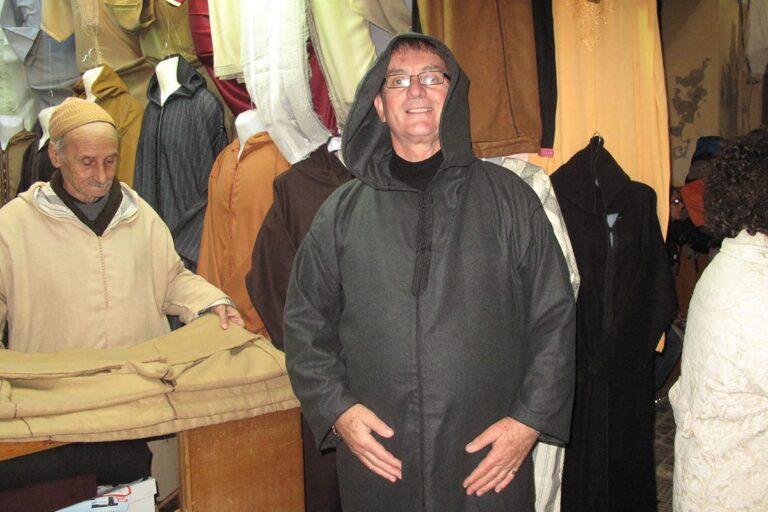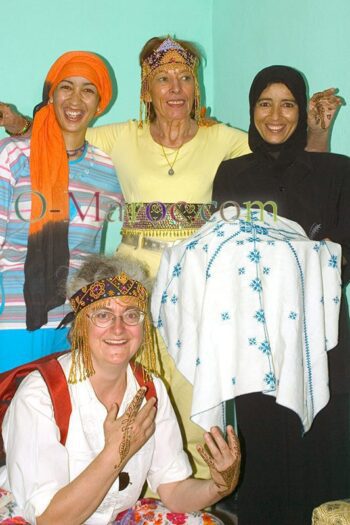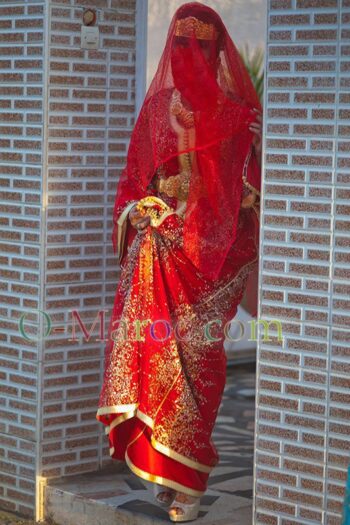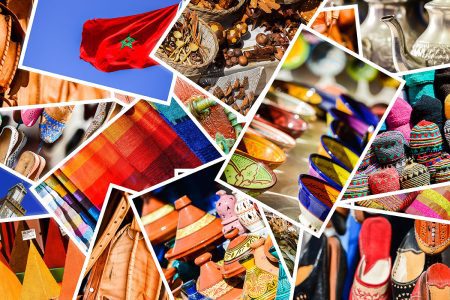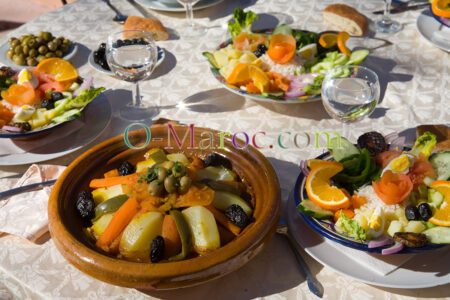How should you dress in Morocco? This question is regularly asked on travel forums, often by people who are a little anxious about going to a Muslim country and wondering whether they should cover themselves from head to toe.
But it’s also a question that comes up when you’re living there: can you afford all the fashion fantasies, should you maintain a certain ‘modesty’ as they say in Islam? Of course, this is a question that is particularly relevant to women…
It’s a question to which there is no single, easy answer. Because it depends on the place, it also depends on you and your ability to withstand heavy stares and more, if you’re dressed in a way that attracts them. Finally, although dress codes would logically seem to be more flexible for foreigners than for Moroccans, this is not always the case.
Before getting to the heart of the matter, this post has only one aim: to give practical advice, based on more than fifteen years of living in Morocco, working in tourism or elsewhere, living in small or large towns. It does not describe ‘what should be’, but what is, without any militancy for or against.
Religious, legal and cultural frameworks
What Islam says: dress with modesty and modesty
It is the only obligation that is spelt out, and it applies to both women and men. The wearing of the veil, which is the subject of a very broad consensus, is still contested by some Muslims, who point to the famous Sura 33-59, which states:
O Prophet! Tell your wives, your daughters and the women of the believers to pull back their large veils; they will be recognised more quickly and exempt from punishment.
is in fact, for some to be taken in a particular context (to differentiate oneself from non-Muslim women), or does not specify exactly what must be covered. (These arguments are also taken up by non-Muslims opposed to the wearing of the veil). But for the overwhelming majority of Muslims, it clearly enjoins women to veil, to cover what is known as their awrah ( عورة ), i.e. the intimate parts of their bodies.
Where there is less consensus is on the definition of this awrah, which ranges, depending on the circumstances, from the navel to the knee (so no nudity in the hammam), to covering the whole body except for the face, hands and possibly feet or, for the most extreme interpretations, covering oneself entirely. For men, on the other hand, it’s simpler: from the navel to the knee.
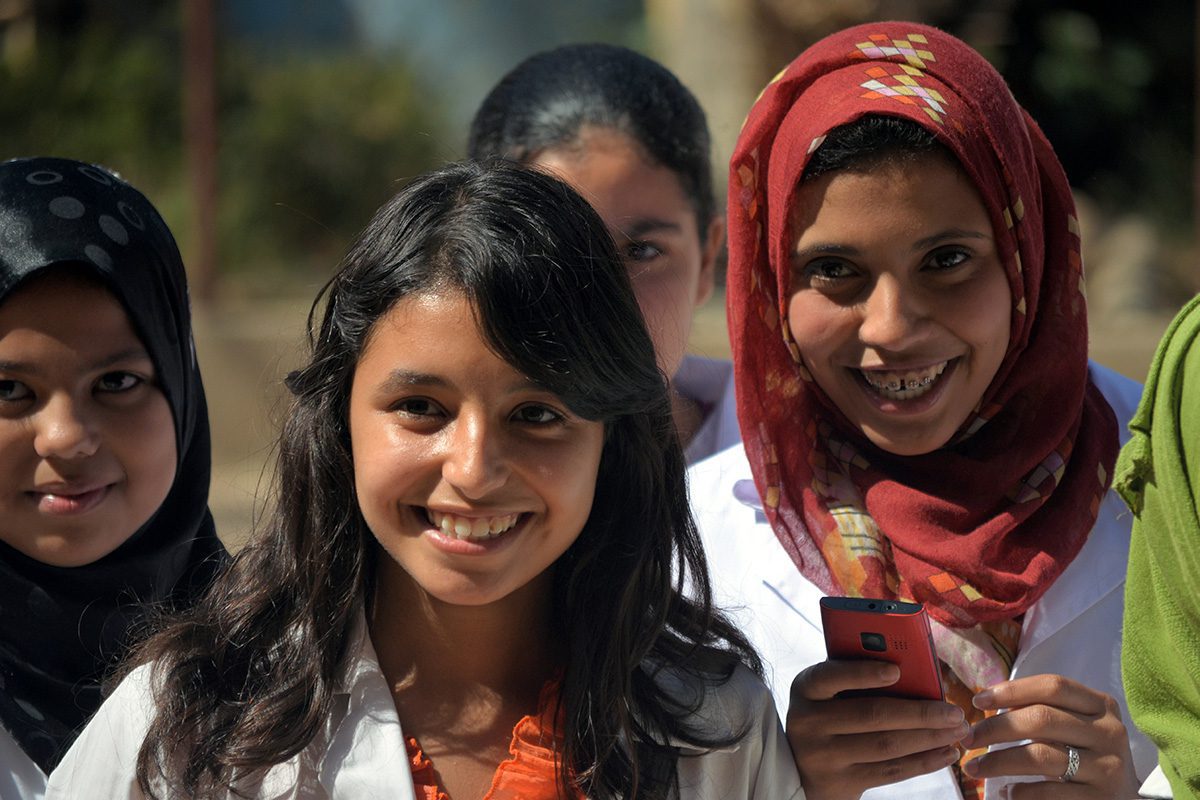
Wearing the veil is an individual decision, and in my street I often see a group of friends walking hand in hand, some veiled, others bareheaded.
The legal framework: indecent assault
Morocco does not impose the wearing of the veil, or the wearing of specific clothing (in some countries, women who do not wear wide, covering trousers, or conversely, trousers instead of a long skirt, can be fined). There was no obligation in the texts and, on the contrary, in the army, the wearing of the veil is not authorised in terms of gender equality.
The Criminal Code punishes indecent assault, without defining it very precisely:
Anyone who, by deliberate nudity or by the obscenity of their gestures or actions, commits public indecency is liable to imprisonment for between one month and two years and a fine of between 200 and 500 dirhams. Indecent behaviour is considered to be public when committed in the presence of one or more involuntary witnesses or minors under the age of eighteen, or in a place open to public view.
In practice, walking around topless is an indecent assault. Not walking around in a skirt that’s too short (but that can get you into trouble).
The cultural framework: hide that skin…
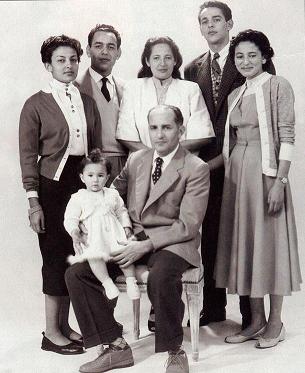
This is much more complicated. Mohammed V, who asked his daughters to remove their veils in public, is often cited as a symbol of women’s liberation, as they are in the famous photograph of the Moroccan royal family in exile. But ‘modesty’ remains essential. To sum up roughly (and move on to the ‘practical advice’ side), there are two groups:
- Veiled women, who can be elegant and fashionable, but will rarely wear clingy clothes,
- non-veiled women, who can be dressed very sexy, but always covering the skin: jeans with holes over leggings, even with a camel toe, are fine, jeans with holes over the skin are not, low-cut T-shirts are fine, but not bare shoulders, etc.
Now, what does that mean for you as a foreigner in Morocco, whether you’re just passing through or a resident?
Covering yourself decently
In the big cities and tourist areas, you can dress quite freely, bare backs, shorts or short skirts are accepted… but attract stares and heavy-handed comments, and even, when the occasion arises, unpleasant gestures.
In the rest of the country, as soon as you leave the beach or the club, a certain decency is required. So (see above) no shorts, but at least Bermuda shorts, no skirts that are too short, and shirts or T-shirts that are at least short-sleeved.
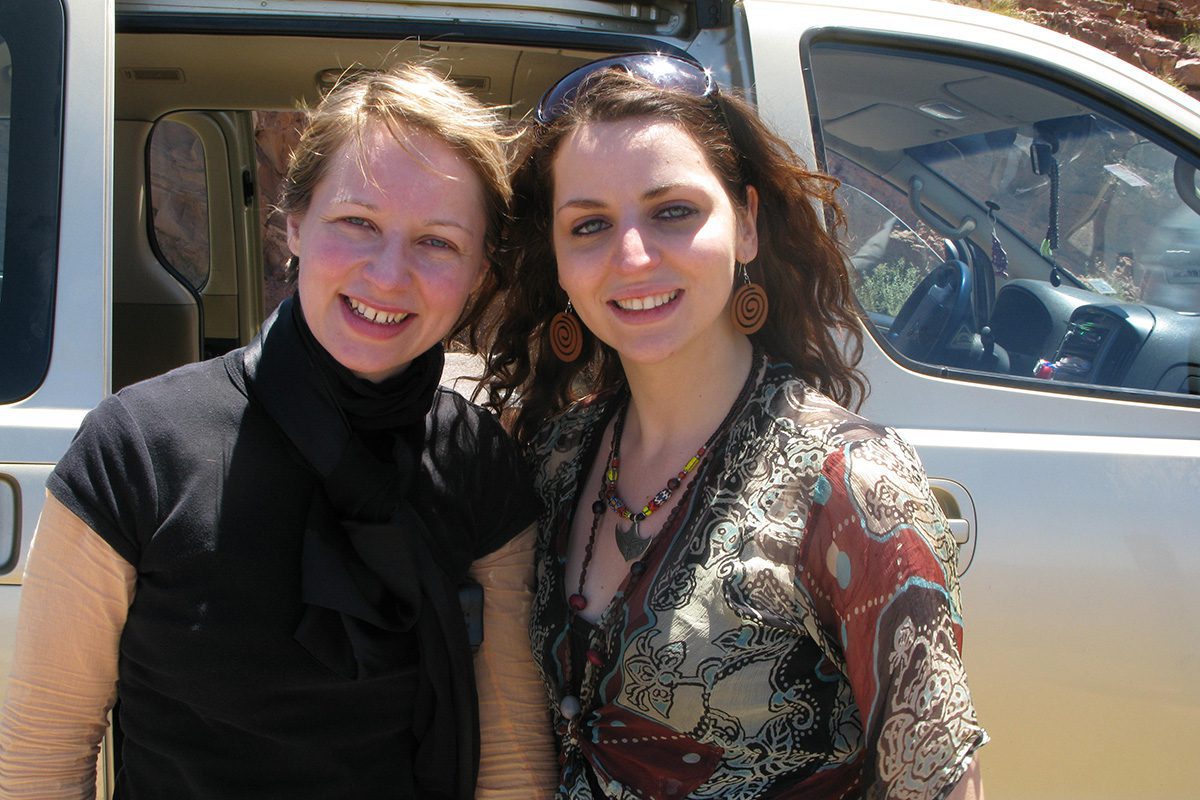
The deeper you go into rural Morocco, the more you’ll need to cover up. In the Atlas mountains or in the deep south, trousers become essential, and long sleeves are appreciated when you cross a village.
Note that for many Moroccans, our white T-shirts are like underwear; prefer coloured shirts or T-shirts.
You’ll also notice that Moroccans in rural areas dress as modestly as women and, like women, often cover their heads.
Some Moroccan women dress very lightly
Yes, that’s true.
- they are Moroccan women, they know better than you what can and cannot be done
- or they are MREs who, like you, don’t have this expertise and can get into serious trouble
- or they are professionals
In this case, they are in groups in the street.
I have Moroccan friends who go to clubs or evenings out with a bag, just to change once they’re inside. They turn into real bombshells, and get dressed ‘modestly’ to go out again. There’s always this separation between the private and the public.
Being stopped in Morocco doesn’t have the same meaning as in Europe. You don’t call out to a “nice girl”. The interjections that are thrown at you are not a tribute!
When travelling, dressing for hot and not so hot weather
Evenings and nights can be cold, so you’ll want to bring a good pair of socks and a jumper, or even a fleece in winter. And maybe you’ll buy a woollen djellaba, or one of those short woollen coats that will protect you from the rigours of the cold. For winter tours, or trekking in the mountains, whatever the season, plan on the “onion skin” system, with several layers that can be layered easily, a T-shirt, a light jumper and a good fleece.In Morocco, as elsewhere, you can’t go into the mountains without something warm.
In the south, the cheche is a traveller’s friend: it cools you down when it’s hot, warms you up when it’s cold, and protects you from the wind and dust at all times. There are several ways of tying it, all of which leave a large flap in front of the face that you can pull back in front of your mouth. In the South, you’ll find it everywhere, for prices ranging from 20 to 50 dirhams.
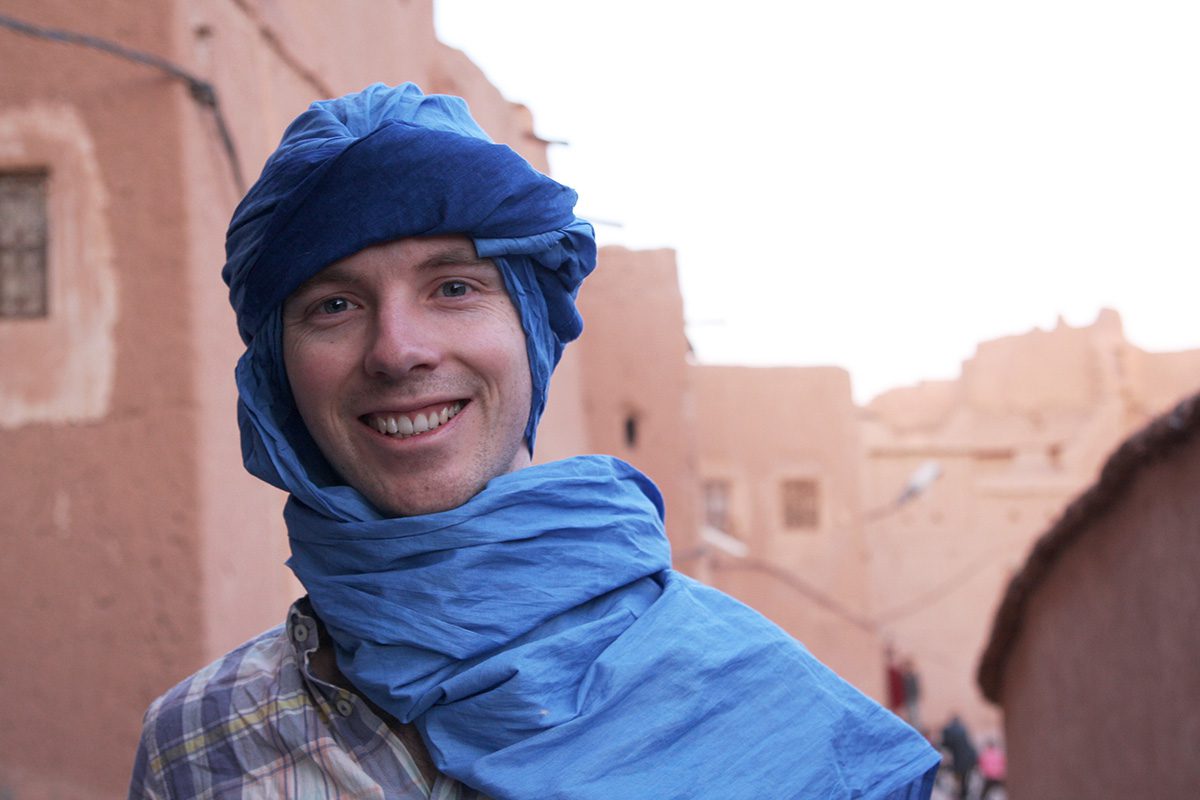
When you buy it, check that it doesn’t bleed – it’s more a question of the fabric than the colour. If you’re told it bleeds, leave it to soak in vinegar for an hour or two, then rinse it – the colour will be fixed. If in doubt, or if it’s impossible to soak the fabric, fall back on white… the dye from the cheche is tenacious, and stubbornly refuses to leave the clothes it has colonised. But there’s nothing more pleasant on a hot day than wetting your chèche with cool water and walking in the beneficial humidity.
The chèche also allows women to cover their shoulders quickly if they feel the need, or to visit the Hassan II mosque.
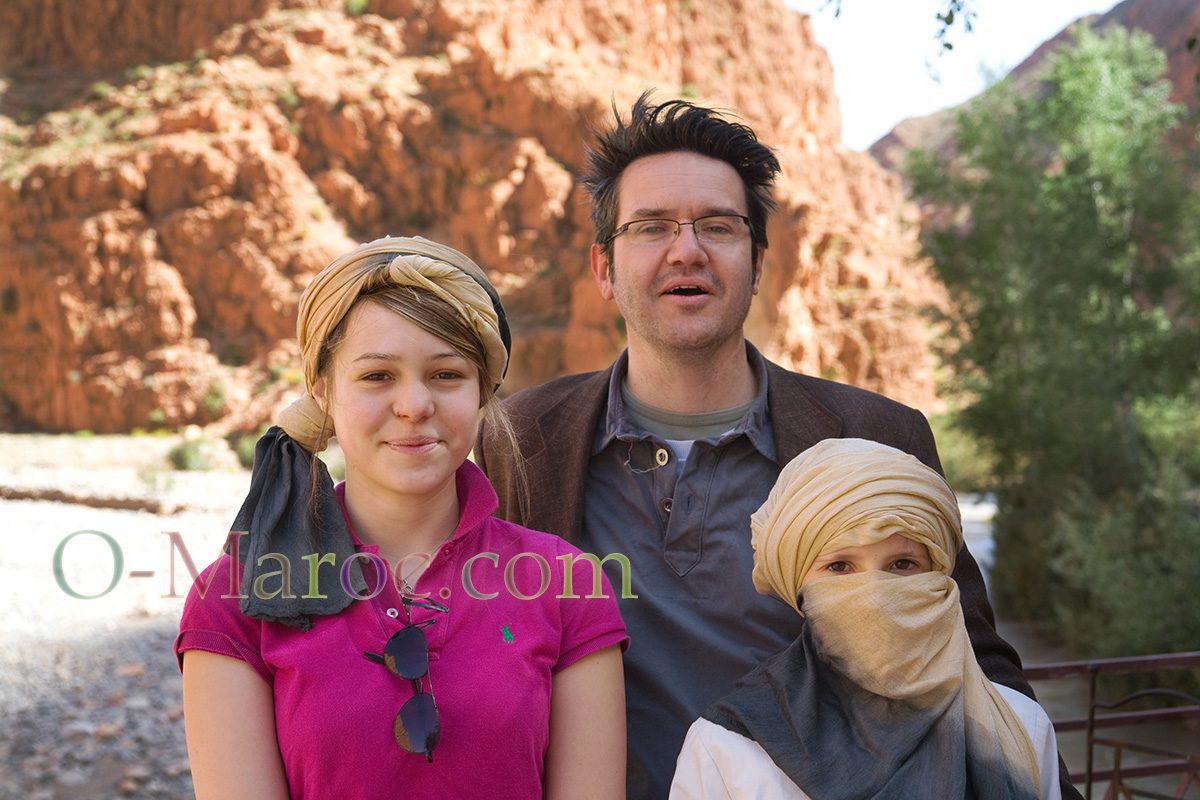
Dressing smartly in the city
In Morocco, appearance counts. Moroccan women are big fans of beauty treatments, spas and hairdressing, and they dress well. Even if their taste isn’t always the same as mine, they generally ‘dress themselves up’. It’s the same for men. You can wear jeans with holes in them because they’re fashionable, but with well-shined shoes and so on. In short, you need to keep your cool style neat and tidy, because if you let yourself go, you’ll soon be looked down upon. The geek couch potato uniform doesn’t work… and is replaced by the djellaba or the gandoura.
Dressing Moroccan-style
When I wrote this post in 2009, the issue of cultural appropriation had not yet crossed the Atlantic. But today, in the English-speaking world at least, the question is being asked. Sometimes here also.
When you’re invited into a Moroccan family, the women are delighted to dress you in Moroccan style, especially if it’s for a party. Just like in a family, they lend each other clothes, takchitas, scarves or headdresses. And it has to be said that festive caftans are a real splendour. This garment is available for both men and women, with differences in cut, accessories and, of course, fabrics.
But it’s not just party caftans. The djellaba is a practical indoor dress (similar to what used to be called a hostess dress, or a nightdress for a lazy morning, or beachwear…). Light in summer, wool in winter, it’s comfortable and I’ve often worn my winter djellaba in the streets of Marrakesh or Ouarzazate. Comfortable, but not very practical, with no pockets, I looked a bit ridiculous with my rucksack.
In Ouarzazate, I had no problem walking down the street in Moroccan clothes. In Marrakesh, not so much. In Casablanca, I get noticed, accosted and so on. So it depends on the context.For men, in summer, the djellaba is all-purpose, anywhere.
So, cultural appropriation or not?
I’ve seen some strange discussions on Facebook, where Americans of North African origin explain that Moroccans don’t even realise they’re being exploited (a bit like the same people who insult me when I use the word Berber).
I work on the assumption, no doubt a naive one, that what Moroccans spontaneously suggest and what pleases them is not bad. It’s part of their tradition of hospitality and sharing, of their tendency to assimilate you when you’re told “You live in Morocco, you’re Moroccan now”, and of their pride in their traditions, which means they appreciate seeing them adopted. On ‘our’ side, I don’t think anyone imagines suddenly being Moroccan by wearing a djellaba or getting a henna tattoo.
On the other hand, in certain contexts, it doesn’t work. Wearing traditional Moroccan clothes when all the Moroccans around you are dressed in Western clothes just looks silly.
To sum up how I recommend dressing in Morocco:
- Not too uncovered, either for girls or for boys, except in really seaside areas (clubs, beach edges, but not in the interior of towns).
- Practical and comfortable for travelling, bearing in mind that in the desert or mountains, it can be hot during the day and cold at night (or cold during the day and very cold at night): multi-layers, zip-off trousers, always a pair of good walking shoes, a cheche in summer.
- At work, Western-style clothes (always not too uncovered) and well-groomed.
- At Moroccan events, traditional clothing, especially for the women: it’s beautiful and it makes you feel good.
- And for leisure, comfort first and foremost, Moroccan-style clothes if you like.
During Ramadan, be more careful than usual to respect modesty.
 A typo or syntax error? You can select the text and hit Ctrl+Enter to send us a message. Thank you! If this post interested you, maybe you can also leave a comment. We'd love to exchange with you !
A typo or syntax error? You can select the text and hit Ctrl+Enter to send us a message. Thank you! If this post interested you, maybe you can also leave a comment. We'd love to exchange with you !

